Unlocking Young Minds: The Power of Phenomena-Based Science Learning for K-5 Students (part 1)
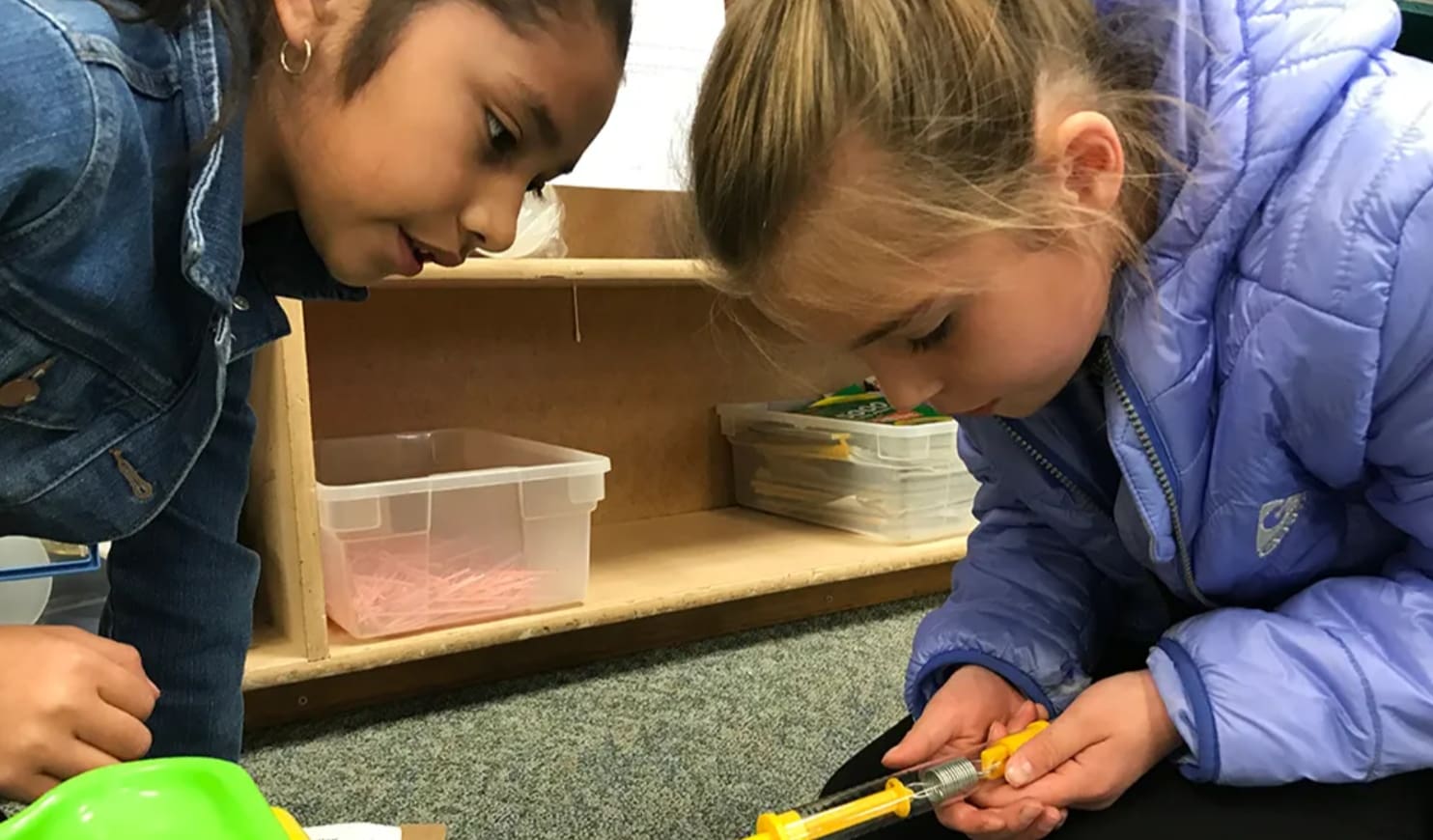
Welcome to the first installment of our three-part blog series on K-5 science and engineering education! We're excited to explore the benefits of phenomena-based science in the elementary classroom, the importance of early exposure to STEM careers, and how high-quality, NGSS-aligned curricula, like Activate Learning's PRIME can support elementary school teachers in preparing their students for future success.
In this first post, we'll dive into the significance of phenomena-based learning for young students, the challenges teachers may encounter along the way, and the ultimate solution. Let's get started!
The Challenges of Teaching Phenomena-Based Science to Young Students
As a post-pandemic society, we face complex challenges in fields such as healthcare, energy, and the environment, including finding skilled workers for STEM jobs. Early exposure to science and engineering is one of the best ways to prepare younger generations for these challenges and for jobs of the future.
In a new research report, The National Academies of Science highlights the significance of science and engineering education in students' early years. Children are naturally curious about their surroundings and are excited to learn about them from an early age, including preschool and primary school. Encouraging their natural curiosity and passion of learning about the world can instill in them a lifelong love of learning STEM. Early exposure to science and engineering also gives students a strong foundation of problem-solving and critical thinking skills.
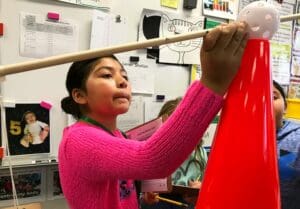
Third-grader conducting phenomena-based science experiment. Credit: The Hechinger Report
Despite the evidence supporting the importance of early science education, teaching science to young students is not without its challenges. In fact, only 38% of K-4 elementary school teachers report feeling "very well prepared" to teach science, while many more report feeling "somewhat prepared". Some educators may feel insecure about their ability to explain complex scientific and technological ideas to their students. Many teachers also struggle to provide hands-on and engaging learning experiences due to limited materials and equipment, training, and time.
Moreover, science education is often not given as much emphasis as literacy and math in elementary schools. The challenges of teaching science to young students are further compounded by this lack of prioritization.
Here are a few more examples of some of the difficulties teaching phenomena-based science and engineering to young students:
- Limited Background Knowledge: Many young students have limited exposure to science concepts, which can make it difficult for teachers to present scientific ideas in an engaging way.
- Short Attention Span: Young students may struggle to stay focused for extended periods, which can make it challenging for teachers to conduct experiments or activities that require a longer attention span.
- Developmental Differences: Young students differ developmentally, which can affect their ability to understand and engage with science concepts. Teachers must be able to adapt their teaching style to meet the needs of all students.
- Limited Resources: Many teachers have limited resources, such as access to lab equipment, supplies, and time, to provide hands-on science instruction to their students.
Teaching science and engineering to young students can be challenging due to limited resources, training, and time. But high-quality teaching materials and professional development can help teachers build the skills and confidence necessary for student success. Despite the obstacles, these challenges can be overcome and there is a tried and true recipe for K-5 science education success right at your fingertips!
Overcoming Hurdles Teaching K-5 Phenomena-Based Science and Engineering
The Next Generation Science Standards (NGSS) is a multi-state effort to implement new education standards and performance expectations for K-12 students to develop scientific knowledge and skills that will prepare them for the future. They offer teachers a powerful tool for helping students to embrace and practice real world science and engineering practices.
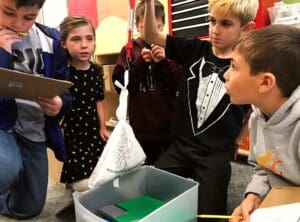
Third-graders conducting science experiments. Credit: The Hechinger Report
The NGSS performance expectations are organized around crosscutting concepts. In grades K-5, students are expected to use scientific practices such as asking questions, developing and using models, planning and carrying out investigations, analyzing and interpreting data, constructing explanations and designing solutions, engaging in argument from evidence, and obtaining, evaluating, and communicating information.
These expectations vary by grade level and serve as a roadmap for the student learning journey:
- Kindergarten students are expected to develop an understanding of weather patterns, living organisms, and basic physics concepts such as the effects of pushes and pulls on the motion of objects.
- First-grade students are expected to learn about light, sound, plant and animal life cycles, and basic design solutions.
- Second-grade students are expected to learn about the properties of materials, landforms, and living organisms' external and internal structures.
- Third-grade students are expected to develop an understanding of weather, plants, animals, the Earth's features, and the effects of environmental changes.
- Fourth-grade students are expected to learn about waves, natural processes, Earth's cycles, and energy transformations.
- Fifth-grade students are expected to learn about matter conservation, the water cycle, interactions among the geosphere, biosphere, hydrosphere, and atmosphere, and the movement of matter and energy through ecosystems.
The real superpower behind the NGSS is its ability to bring phenomena to students in a way that appeals to (and feeds) their natural curiosity and empowers them to explore phenomena like scientists in the real world.
Phenomena-based science instruction is a key component of NGSS-aligned instruction, which is designed to help students develop a deeper understanding of the natural world. By focusing on real-world phenomena, such as the changing seasons or the behavior of light, students can engage in scientific inquiry and develop critical thinking skills.
Science that Sticks: Why High-Quality Phenomena-Based Science Curriculum is the Game Changer Teachers Need
By incorporating NGSS-aligned, phenomena-based science instructional materials into their teaching like Activate Learning's PRIME which not only offers high-quality instructional materials but also addresses the challenges of limited science background and content knowledge among many elementary school teachers, elementary school teachers will have the powerful tools and support they need to help young students develop an early interest in STEM careers and prepare them for future success.
PRIME, which stands for Phenomena, Relevance, Inquiry, Meaning, and Exploration, is a hands-on, kit-based, K-5 science curriculum with a strong discourse component. It was developed by UChicago STEM Education with the goal of making science learning for elementary students a predictable routine that can be easily incorporated into the daily classroom schedule. Teachers are supported in developing a culture and climate in their classroom that promotes developing science literacy through doing, talking about, reading, and writing about science. A key reason why PRIME is so effective is that it encourages teachers to embrace the role of the learner of science with their students - so that a community of science learners grows together!
In the next two posts of this series, we'll explore K-5 science education further. The second post will cover the benefits of integrating engineering into K-5 science curriculum, including how it supports critical thinking, problem-solving, and creativity including the challenges that teachers may face and tips for overcoming those challenges. We'll also examine the importance of introducing young students to STEM careers, how schools and private industries are partnering to do so, and how NGSS-aligned curriculum like PRIME supports these initiatives.
In the third and final blog post in this series, we'll explore the future of phenomena-based science learning to see how teaching elementary students science is changing, how school districts are boldly incorporating innovative solutions to give elementary students the head start they need, and how teachers can successfully prepare K-5 students for a phenomenal future!
* * * * *
Related Posts:

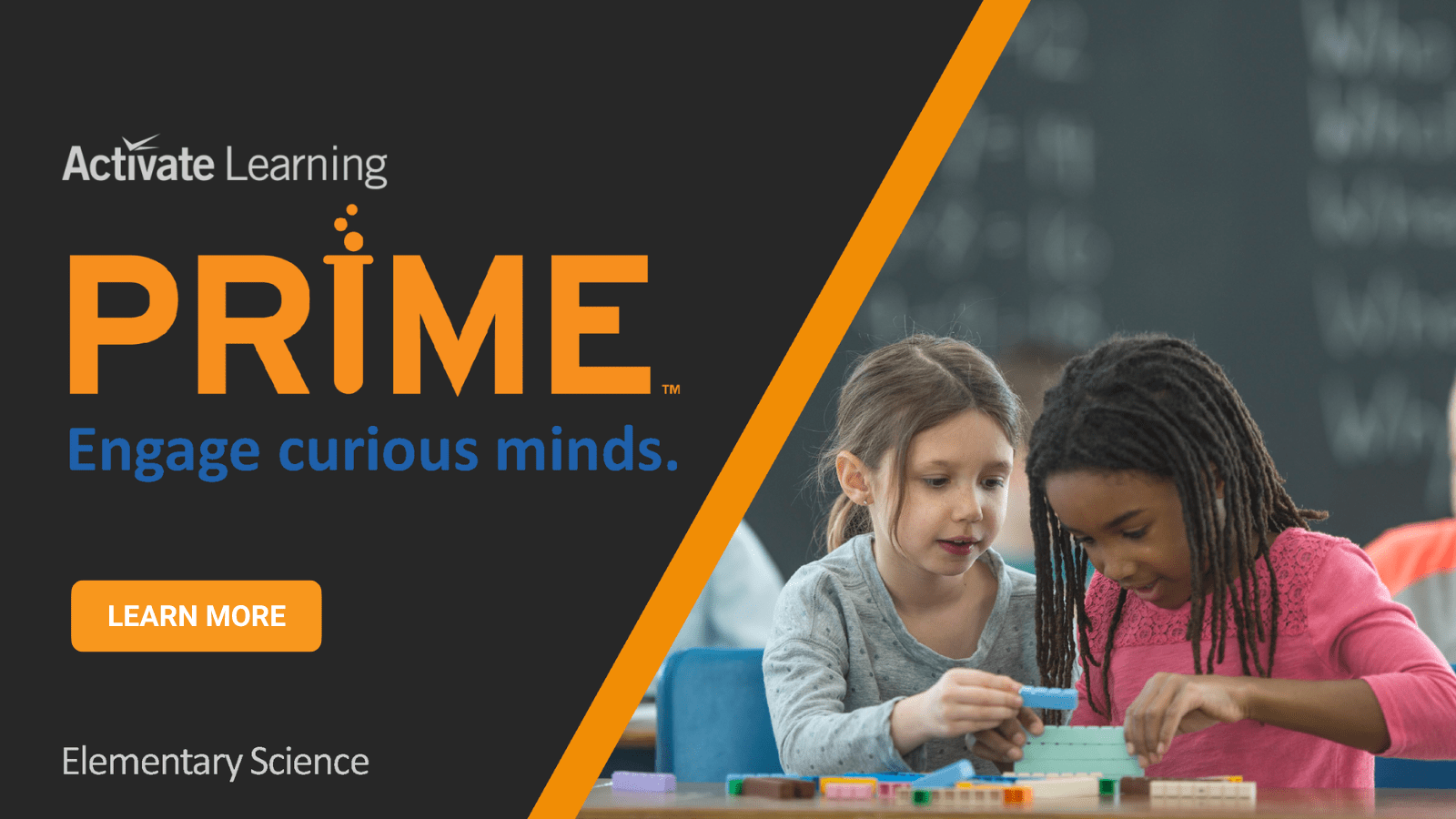
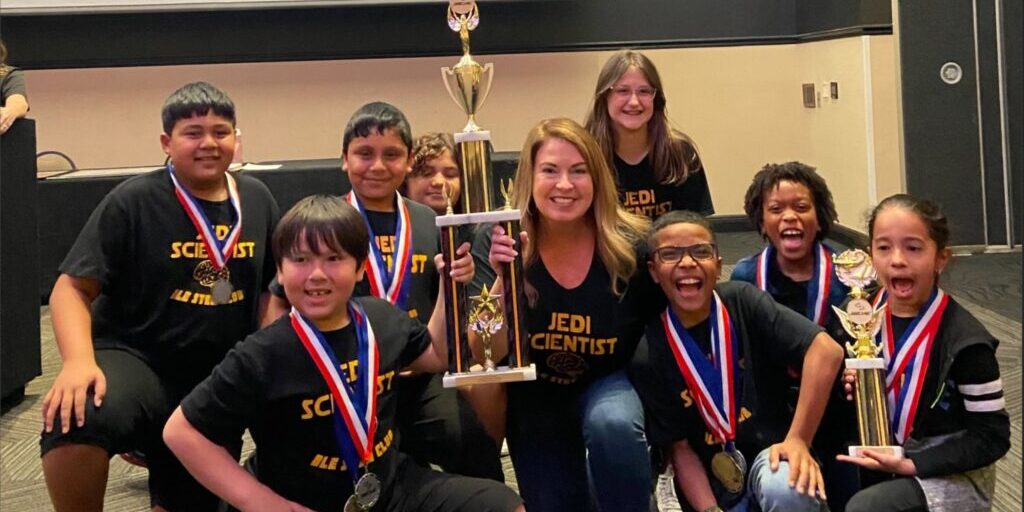
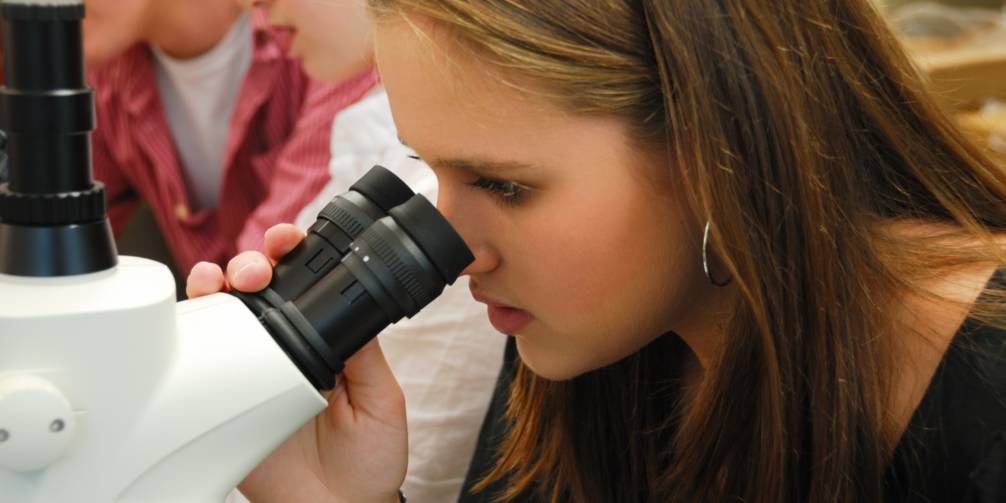
![Blog Header Image - Driving Question Board [PHOTO CREDIT: OpenSciEd Science teacher, Gretchen Brinza, @gretchenmilary on Twitter]](https://activatelearning.com/wp-content/uploads/bb-plugin/cache/Blog-Header-Image-Driving-Question-Board-1024x512-panorama-8a8f0f1d2b3327f955cef064d701bc8f-.png)